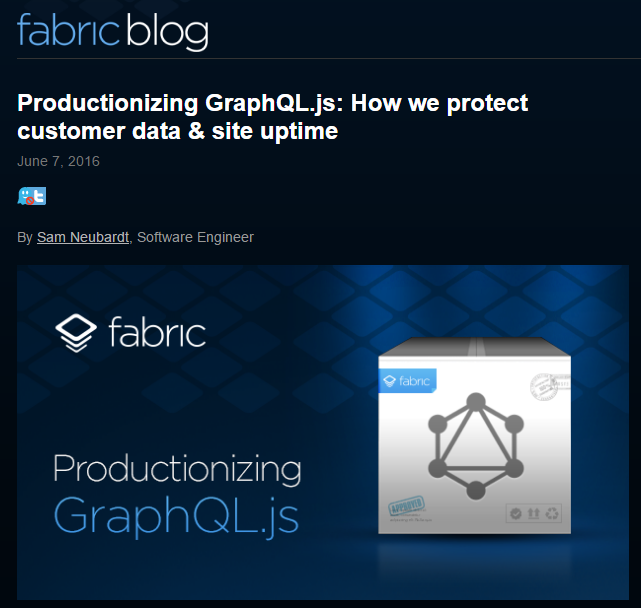Add GraphQL to Existing REST API Architecture
Kevin C Chen @ Squad UI
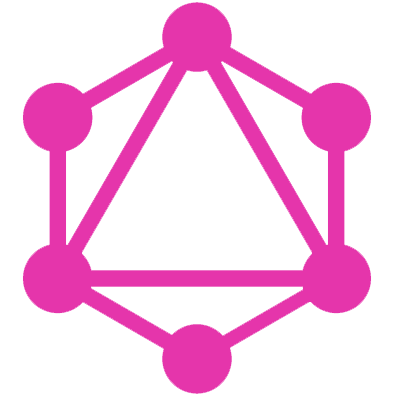
{ REST }
- What's GraphQL and WHY?
- Example
- Challenges GraphQL would address
- Ways to integrate
- Q&A
What we will cover...
POLLS
Source: http://i.huffpost.com/gen/1311474/images/o-SCHOOLS-facebook.jpg
It gives clients the power to ask for exactly what they need and nothing more, makes it easier to evolve APIs over time, and enables powerful developer tools.
You're already using it
(Facebook has billions daily active users)
GraphQL
A query language for APIs
GraphQL is designed and used at Facebook to request and deliver data to mobile and web apps since 2012.
Client + Server
Describe data requirements
Define API capabilities
Render UI
Data Provisioning
WHY?
Already got
{ REST API }
[Reference: REST 2.0 Is Here and Its Name Is GraphQL]
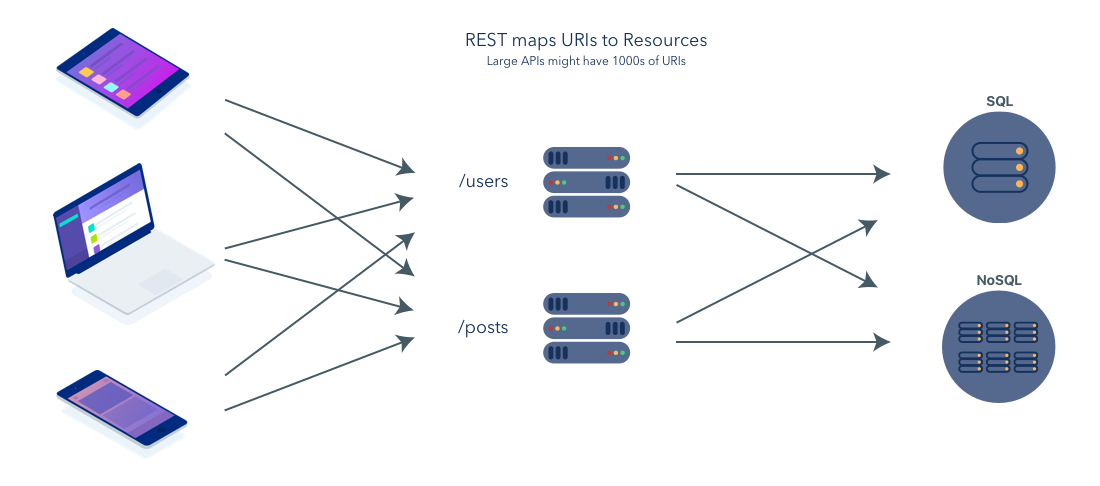
[Reference: REST 2.0 Is Here and Its Name Is GraphQL]
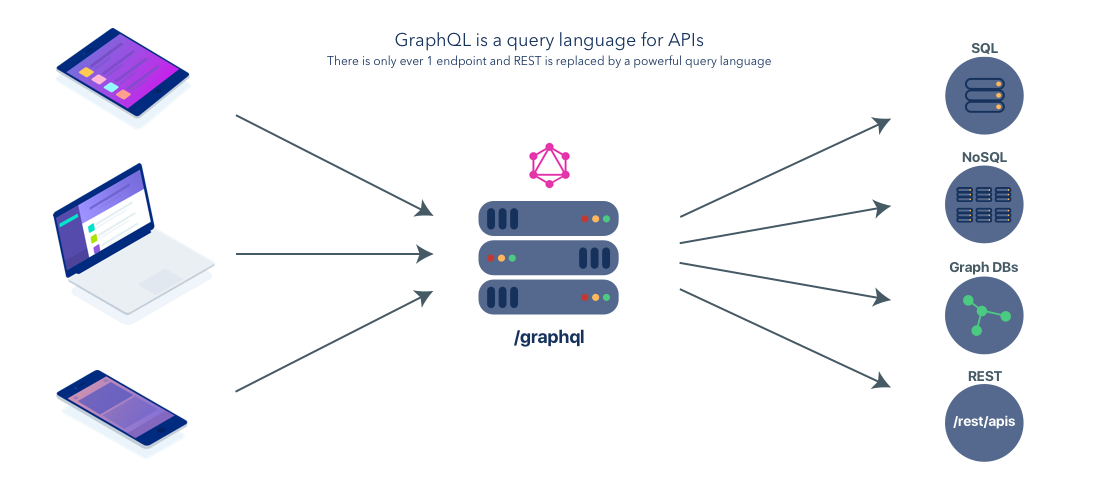
GraphQL makes everyone's life better
-
Client-side developer friendly with declarative data fetching. GraphQL gives clients the power to ask for what they need and get exactly that.
==> Address UI requirement with better efficiency
- GraphQL enables the server-side developer to focus on describing the data that is available rather than customizing and optimizing specific endpoints.
==> Coherent API design with fewer API changes
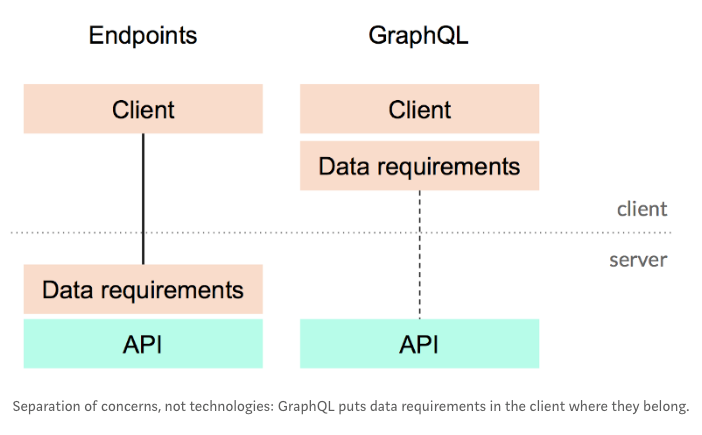
[Reference: The GraphQL stack: How everything fits together]
Separation of Concerns
drift
applications
occurrences
details
computers
/software-inventory/drift/...
???
Endpoint entry
Group By X
Detail data associated with Y
List Y of Group X
occurrences
details
/applications
/computers
/{sha256}/occurrences
/{hostID}/occurrences
UI driven REST API design
| URL | Method | Operation |
|---|---|---|
| /software-inventory/drift/applications | POST | List drift group by file hash |
| /software-inventory/drift/computers | POST | List drift group by computer |
| /software-inventory/drift/applications/{sha256}/occurrences | POST | Gets a list of the drift instances of the given hash |
| /software-inventory/drift/computers/{hostID}/occurrences | POST | Gets a list of the drift instances of the given computer |
| /software-inventory/drift/applications/{sha256}/details | POST | Gets details about a given drift occurrence |
Customized REST API
Thinking in Graphs
Drift
Applications
Details
Computer
Policy A
Computer
Applications
Drift
Details
Base Policy
Computer
Applications
Drift
Details
Policy B
Computer
Applications
Drift
Details
query FirstFiveDriftDetailOfComputer{
Computer(id:"15"){
hostname
policy {
name
}
applications {
name
drifts(first:5, path: "/tmp") {
sha256
timestamp
filename
}
}
}
}
Client issues request declaring data requirements
{
"data": {
"Computer": {
"hostname": "MyServerX",
"policy": {
"name": "Server Policy"
},
"applications": [
{ "name": "Server Utility" },
{ "drifts": [
{
"sha256": "c6e5ec6ffa3d5a2dd7679306a8eac04fef2b7b9cDC743B4FBE2FD4446C7B62DBC9",
"timestamp": 1512346092,
"filename": "StrangeJava.jar"
},
{
"sha256": "5F753829F6E736C06CCB1F4C443F5A01FC9C27DC743B4FBE2FD4446C7B62DBC9",
"timestamp": 1512505883,
"filename": "badScript.sh"
}
]
}
]
}
}
}Server issues response matching structure of declared data requirements
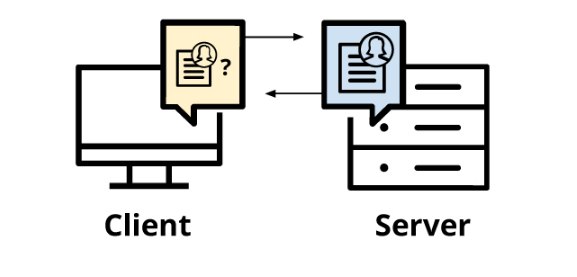

Query
mutation CreateAuditEvent($evt: Event!){
createAuditEvent(event: $evt) {
time
severity
description
}
}
Client issues request declaring data requirements
{
"data": {
"createAuditEvent": {
"time": 1512940114,
"severity": "high",
"description": "This is an event"
}
}
}Server issues response matching structure of declared data requirements
{
"evt": {
"time": 1512940114,
"severity": "high",
"description": "This is an event"
}
}
Variables
Mutation
Simplified REST API
| URL | Method | Operation |
|---|---|---|
| /software-change | POST | Create a new drift |
| /software-change | GET | Get a list of all drift |
| /software-change/15 | GET | Fetch details on drift with ID 15 |
| /software-change/15 | PUT | Update details on drift with ID 15 |
| /software-change/15 | DELETE | Delete drift with ID 15 |
Decoupled from UI requirements

{ REST }
Versioning remains difficult
Evolve your API without versions
Everything is typed and everything you want to expose is part of a schema
Doesn't know what data the clients actually needs?
Lacks machine-readable metadata with out-of-date documentation
Documentation is a first-class citizen
Hampers productivity & product iterations with adjustments needed on both frontend & backend
Allow for rapid product iterations with both frontend and backend
Developer Experience
vs.
Return fixed data structure defined by Server resource
Return data structure in the form requested by Client
Thinking in Graph, human readable query
Challenging URL design with heavily nested relationship
Many HTTP requests with many endpoints
1 HTTP requests with 1 endpoint
Vulnerable to Over- and Underfetching data
No more Over- and Underfetching
Technology Differences

{ REST }
vs.
GraphQL Integration
Incremental Adoption Phases
200x
SOAP
201x
REST
2017
REST + SOAP
2018
REST
+ GraphQL
for UI
201x
REST
+
GraphQL
for all Client
First questions people ask
- As an API developer, is it helping me to reduce the amount of the work for porting the existing REST API?
- Can I use this without rewriting my existing stuff?
- Where do I start?
All Clients
REST + SOAP
SOAP
Server
REST
Phase #1 - Current API Model
- All Client types access server resources via either REST API endpoint or SOAP API
API Clients
REST + GraphQL
GraphQL
Server
Phase #2 - Initial Adoption Variant 1
- GraphQL Server is part of DSM responding to Client's queries
- New Web App Clients (React SPA) make query via GraphQL
- Non-UI related REST API can be decoupled from UI logic and UI requirement changes
- Deprecate SOAP API
REST vNextGen
Common Business Logic
Web App
Clients
API Clients
REST + GraphQL
GraphQL
Server
REST vNextGen
- Have an independent GraphQL Server (e.g. node.js) that could access and wrap the exist REST API and responding to Client's queries
- Start with Web App client-side needs, fill in API bit by bit
- New Web App Clients (React SPA) make query via GraphQL
Phase #2 - Initial Adoption Variant 2
Web App
Clients
API Clients
REST + GraphQL
Server
Automation Test Clients
Phase #3 - GraphQL as alternative API Variant 1
-
More Client type support
-
Consider making GraphQL API publicly available as an alternative to REST API
- REST API phase out gradually if GraphQL becomes the mainstream API
- Iterate and validate with customer with additional integration option that provides better dev experience
GraphQL
REST
Common Business Logic
Web App
Clients
API Clients
REST + GraphQL
Server
Automation Test Clients
Phase #3 - GraphQL as alternative API Variant 2
-
GraphQL is added in an non-disruptive way, the coverage continue to grow
-
Continue to support & expand REST API
-
New REST endpoints are backed by GraphQL
- Iterate and validate with customer with additional integration option that provides better dev experience
GraphQL
REST
Common Business Logic
Web App
Clients
API Clients
REST + GraphQL
GraphQL
Server
REST vNextGen
Web App Clients
- An non-intrusive addition into DSaaS by routing Web App Client traffic through GraphQL
- Independent GraphQL Server could scale up and down when necessary
- GraphQL Server as an gateway for other data sources or µ-services
- GraphQL can also facilitate communication & integration between µ-services
Phase #3 - DSaaS Variant 1
µ-service B
+ µ-services
ALB
µ-service A
API Clients
REST + GraphQL
GraphQL
Server
REST
Web App Clients
-
GraphQL Server is part of DSM and service the Web App Client requests routed by load balancer
- Could consider making GraphQL endpoint availble to non-Web App Clients
- Web App Client make query via GraphQL
Phase #3 - DSaaS Variant 2
µ-service B
+ µ-services
ALB
µ-service A
Common Business Logic

Apollo Stack
-
Apollo Client to bind data to your UI, for React, JavaScript, and native platforms
-
Apollo GraphQL Servers connects to one or more REST APIs, microservices, or databases
- Community-focused built by the community, for the community
[Source: Apollo Stack]
GraphQL is here to help
- As an API developer, is it helping me to reduce the amount of the work for porting the existing REST API?
Ans: Yes. GraphQL will help take care of UI dependent APIs
- Can I use this without rewriting my existing stuff?
Ans: Yes. Existing REST APIs will continue to work with GraphQL
- Where do I start?
Ans: POC, tutorials, Apollo Stack
When a technology solves real problems...
industry will embrace it



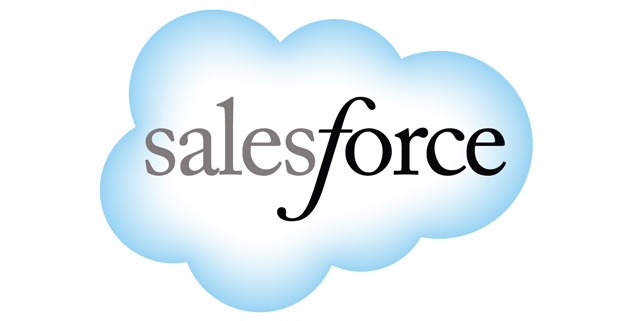


Open Questions
- Integration model and trade-offs?
- Performance implications?
- Improved documentation workflow?
- Adoption roadmap: from now, towards the future?
- How do we plan to sustainably grow and support the API stack into the future?
-
With GraphQL
- Allows for rapid iterations on the frontend without any extra work on the server
- Confidently support shipped clients as a system evolves
- Incremental adoption is feasible with many options
- Allows for rapid iterations on the frontend without any extra work on the server
Key Takeaways
(REST API + GraphQL) + React =

Happy Customer + Happy Dev
References
-
Learning Resources
- GraphQL http://graphql.org/
- Apollo Stack https://www.apollographql.com/
- GraphQL Tutorials https://www.howtographql.com/
- GraphiQL IDE Example http://graphql.org/swapi-graphql
- 3rd Party Examples
Questions
?
Appendicies
What else does GraphQL provides?
- Insightful Analytics on the Backend - DSaaS
- Authentication
- Validation
- Rate limit - security
- Subscriptions - real-time push-style updates - limited with Java
- Filtering
- Pagination
[Ref:How to GraphQL]

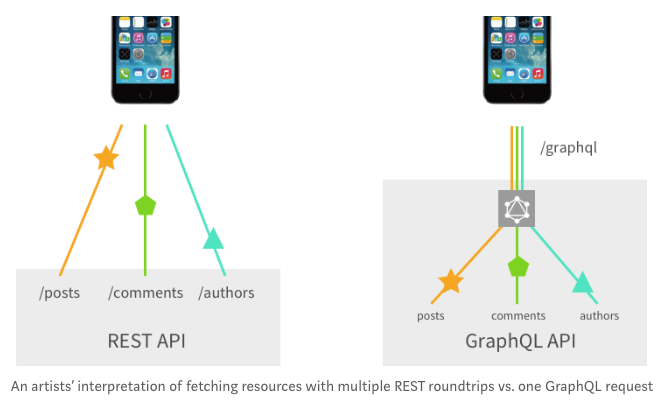
[Reference: GraphQL vs. REST]
Blog Example
- Our blog has multiple posts
- Each post has an owner
- Each post may have multiple comments.
- Each post may have multiple subscribers
Display the list of posts belong to its owner, with it comments and...
Business Requirement for Client / UI / Tool
| URL | Method | Operation |
|---|---|---|
| /user/20/posts | POST | Create a post associated with User 20 |
| /user/20/posts | GET | Fetch all posts created by User 20 |
| /user/20/posts/15 | GET | Fetch post 15 created by User 20 |
| /user/20/posts/16 | PUT | Update post 16 created by User 20 |
| /user/20/posts/10 | DELETE | Delete post 10 created by User 20 |
User
Posts
Comments
Subscribers
Posts
Comments
Subscribers
/user/20
/user/20/posts
???
User
Posts
Comments
Subscribers
/user/20
/user/20/posts
???
| # | API Calls | Comment |
|---|---|---|
| 1 | /user/20/posts /posts/1/comments /posts/1/subscribers /posts/2/comments /posts/2/subscribers |
would end up with tons of rountrip HTTP requests to get these data |
| 2 | /user/20/posts /user/20/posts/comments /user/20/posts/subscribers |
very particular & customized, need to put together a query for these customized endpoints |
| 3 | /user/20/posts_with_comments /user/20/posts_with_subscribers |
tightly coupled with very particular feature in our frontend, breaking RESTFUL conventions. |

{
User(id:"abc"){
name
posts {
title
comments {
content
timestamp
}
subscribers {
name
}
}
followers(last:3){
name
}
}
}
Client issues request declaring data requirements
{
"data": {
"User": {
"name": "Mary",
"posts": [
{ "title": "Learn GraphQL today" },
{ "comments": [
{
"content": "This is a very good blog post",
"timestamp": 1512346092
}
]
},
{ "subscribers": [
{ "name": "John" },
{ "name": "Tom" }
]
}
],
"followers": [
{ "name": "John" },
{ "name": "Alice" },
{ "name": "Sarah" }
]
}
}
}Server issues response matching structure of declared data requirements

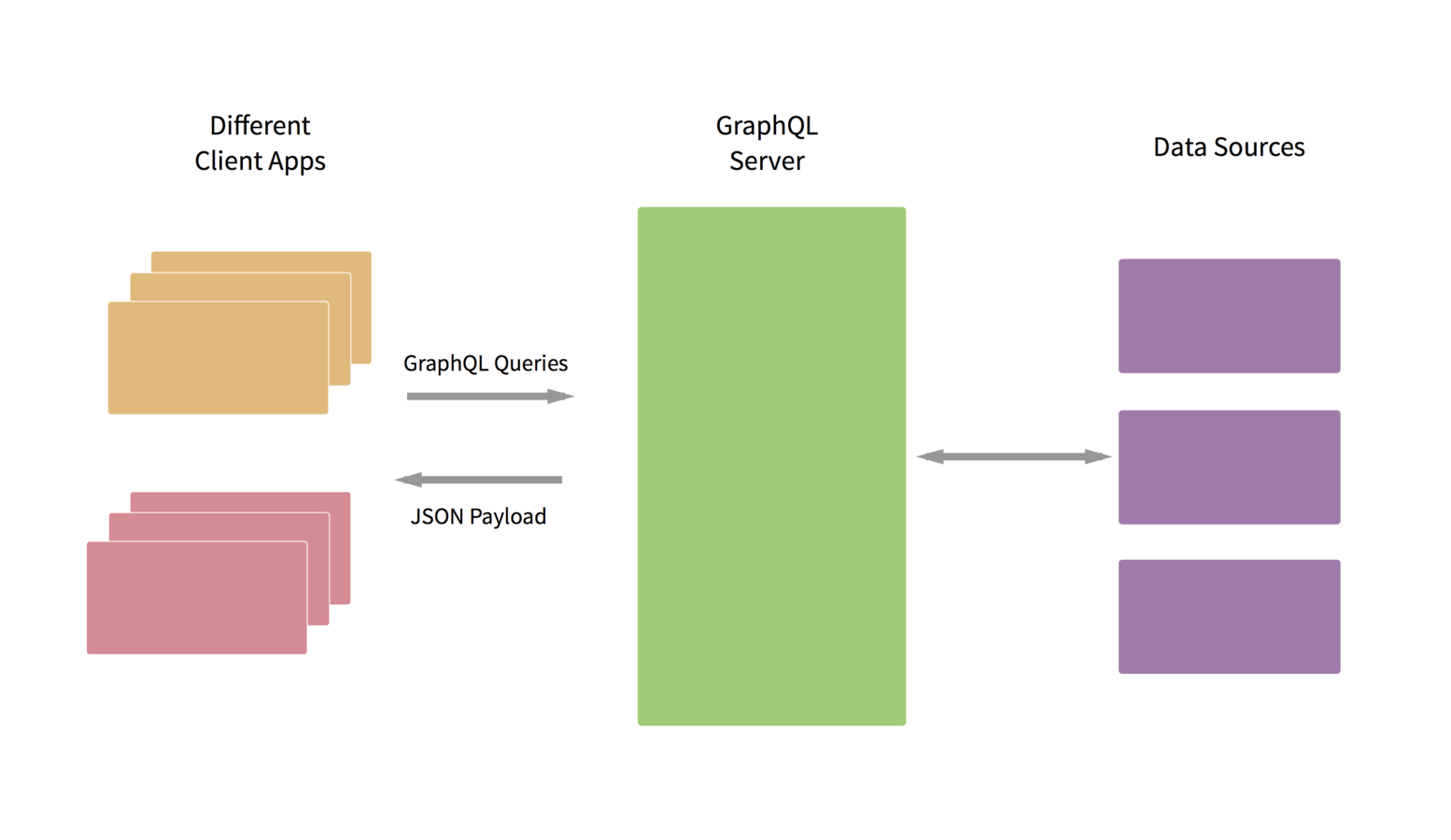
[Source: Based on Learn GraphQL by KADIRA]
REST
SQL
S3
Web App
Mobile
Resolvers
Connectors
-
A GraphQL query returns exactly what a client asks for and no more
-
Confidently support shipped clients as a system evolves
-
Strong typed query allowing the server to make guarantees about the response
-
No more time spent trying to figure out an API
Key Advantages
Tackling Real Problems
- Want to decouple frontends and backends to speed up development
-
REST API has gotten so complicated that it's a significant drag on product development.
- Moving to a microservices architecture
- Have a mobile client and care about latency and bandwidth
- Have more than one client (e.g. web + iOS/Android)
[Reference: Why GraphQL is the future]
Solving REST API Challenges
Require multiple round trips between the client and server to render single views
Data Over-fetching - as the requirements change, payload grows monotonically, but old clients also receive this additional data
Versioning of API introduce complexity of the server with code duplication, spaghetti code and is hard to maintain
